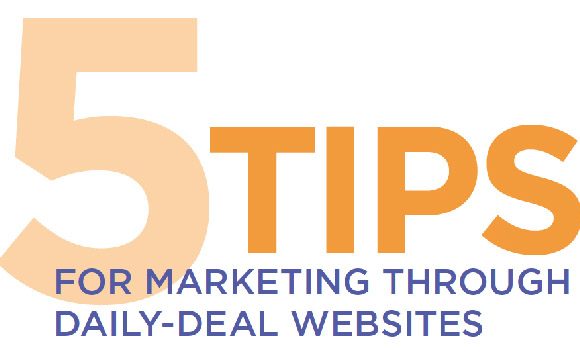By Paul Cascio,The Guerrilla Framer
When I first joined the framing business more than 25 years ago, I had to advertise in the Yellow Pages directory. It was a necessary evil for anyone in a service business. The Yellow Pages directory was the Google of its day. There, consumers searched for services, such as plumbing, transmission repair and, yes, picture framing. The less frequently consumers needed a service, the more important it was that the company have a commanding presence in the Yellow Pages, the place where consumers let their “fingers do the walking.”
Local telephone companies published the Yellow Pages, and those companies enjoyed a virtual monopoly. Sure, there were other wannabe books, but they were, for the most part, worthless. If you wanted your phone to ring, you needed to have an ad in the Big Book, as the telephone company liked to call it.
According to your Yellow Pages sales rep, the bigger the ad, the better—especially if you also opted for the magic of red ink. Advertising in the Yellow Pages was expensive, and if the ad didn’t produce the results you wanted, you couldn’t modify it. If you didn’t pay, you would lose your telephone service.
My first ad, a quarter-page masterpiece in the Hartford, Connecticut, directory more than 25 years ago, cost more than $600 a month, and it was a fixed expense for the term of its 12-month contract. The good old days turned out to be not so good.
Fortunately, the Yellow Pages directory is now mostly obsolete. Today, your prospective customers use search engines, such as Google, Bing and Yahoo, to seek out and compare service providers. Your Yellow Pages ad is now your website or, more specifically, the landing page of your website.
This month’s column examines ways to maximize the effectiveness and visibility of the first and most important page of your website, the landing or index page. It examines methods of improving search-engine optimization (SEO), or page ranking; avoiding common mistakes; and converting website visits into sales.
Improving SEO
Having a website is worthless if your prospective customers never see it. Your objective is to bring qualified traffic to your site. A high page rank with Google places your business at the top of the list when someone in your area conducts a search for the services you offer.
You shouldn’t worry about those potential customers who search broadly for “picture framing.” It’s OK if Google lists your site on page 372 of the results for such a broad search. The people doing those searches may as well be spitting into the ocean and will have to narrow their search criteria to get more useful information.
Your focus should be on the person whose search criteria includes additional keywords that identify your town, neighborhood, area code or zip code as a way of filtering the results. By focusing on localized searches, you can be the leader of the pack when it comes to search results.
Being at the top of the list of search results is ideal, but as long as your website appears in the upper portion of the first results page, or “above the fold,” to use a newspaper term, the user won’t have to scroll down the page to find you. I consider any listing above the fold to be a prime position.
Achieving Prime Position
It’s relatively easy to get prime position for localized searches. There are typically few frame shops in one part of any town or zip code. The key to success is to include searchable information, such as the neighborhood, town, zip code and area code in as many places on your website as possible and to include that information in the metatags—the behind-the-scenes info that search engines often use to decide page rankings.
Always include this information in your website:
– Title. Use a long title that includes lots of searchable information as part of the metadata.
– Description. The page description is important not only because it enhances your page rank, but also because the first few lines of the description often appear in the search result. You can use it to convince prospects to visit your site.
– Keywords. Keep in mind that using too many keywords could actually hurt your page rank. Google’s ranking system is a well-kept secret, and the company periodically changes it. Conventional wisdom suggests limiting the number of keywords to a maximum of six to 10. Separate keywords by commas, and the keywords should include your company’s general location and the words “picture framing,” “custom” and “art.”
– Header. Work your location info into the headline of your website; for example, use a header such as “Orange Park’s Favorite Picture Framer.”
– Body. Include as much searchable info as possible in the body text.
– Image Names. Consider renaming images to include your zip code or town name.
– Alternative Text. Use alternative text for situations in which the image is unavailable to readers—either because they have turned off “images” in their web browser or because they are using a screen reader due to visual impairment. Providing an alternative allows all users to access the same information, even if they cannot see an image. Some web browsers show the alternative text when the mouse cursor hovers over an image. As a side benefit, alternative text may enhance page rank for the searchable terms that identify your location.
Although it’s impossible to know exactly how Google, Yahoo, Bing and other search engines determine page rank, include information that identifies your location in as many places as possible. This approach gives you the best chance of achieving a high ranking whenever someone conducts a local search. After you maximize your chances of attracting prospects to your website, the next step is to focus on what to do with them once they’re there.
Primary Objective
The main objective of your website is to produce sales. However, if your business is a retail store or home-based business, you’re probably not directly selling products or services from your website. Therefore, the goal of your website should be to get customers into your store or to call you.
Unfortunately, most framing websites don’t achieve these goals. Most landing pages are nothing more than electronic business cards. With a bit of effort, however, you can make your site into an engine that repeatedly produces new customers and generates sales.
The key is to design your landing page as if it were a Yellow Pages ad. Despite being just keystrokes away from the competition, your landing page must convince visitors to end the search and choose you. And you want them to consummate the decision with a telephone call, which will give you an opportunity to get a verbal commitment for a face-to-face meeting.
Where Are You? How Do You Get There?
A good Yellow Pages ad included not only an address but also, when necessary, a map. The landing page of your website should include a map and written directions or a link to a Google Maps or MapQuest page with your location prelisted as the destination. Placing this information prominently on your landing page can help bring prospects directly to your store. A photo of the exterior of your store can also be a helpful navigational aid.
Next, make it visual. Picture framing is a visual business, yet many framers have a website that primarily includes only text—which is neither visual nor appealing.
A one-page website that looks professional and inviting is all you need to capture prospects. Later, you can add more content to your site. It’s a good idea to offer useful information, such as picture-hanging tips. However, the landing page makes the all-important first impression. Make sure it looks good before you spend time adding more pages.
Don’t Derail the Sale
The Google search that brings prospective buyers to your website also provides easy access to most, if not all, of your competitors, which invites comparison shopping. Naturally, it’s in your best interest if the shopping ends with a visit to your website.
Encouraging a phone call offers the most consistently valuable outcome, and it’s what you should strive for. A phone call does what a web page can’t: It creates a personalized experience. A phone conversation gives you a chance to build a rapport with your new prospect and an opportunity to separate yourself from the competition. It also allows you to answer questions and address your caller’s concerns.
If you effectively handle the call, your prospects will no longer feel the need to call other framers. Their search ends with you and with a promise to ask for you by name when they arrive at your store. Because of this rapport, you almost ensure a sale even before you end the call. When you actually meet your prospect, both of you will feel more at ease because you’re already familiar with one another.
Without that telephone conversation, distractions and nearby competitors can prevent even a well-intentioned prospect from arriving at your store. There’s no reason to rely only on the power of what visitors see and read on your website. A telephone conversation personalizes the experience and strengthens the prospect’s desire to do business with you and only you. Near the end of the conversation, be sure to ask, “Can you come in now?” Confirm an appointment, and you’re almost certain to make a sale.
Make the Phone Ring
Encourage customers to call by prominently placing your phone number in large type near the top of the page. Include some inviting words of encouragement, such as, “Call us with questions.” Consider displaying your number as an image rather than text. This approach can help reduce the number of telemarketer calls you receive.
Consider adding a call-me button, which immediately connects you to the prospect’s phone. A number of companies provide this service for a fee, but Google Voice users can get it free with Google’s Call Me widget. When a visitor to your site clicks on the call-me button, Google immediately calls both your phone and the visitor’s. In just seconds, you’re connected, giving you a chance to turn a website visitor into a customer.
Don’t use your website as just a business card; turn it into a sales engine with the techniques and strategies that made Yellow Page ads effective. Exploit these techniques and you’ll find that the next time that prospects let their fingers do the walking, there’s a good chance that walk will end with you.
Paul Cascio, aka The Guerrilla Framer, is director of the American Picture Framing Academy (pictureframingschool.com), where he conducts training workshops and seminars for new and established framers. Contact Cascio at pdc@pictureframing school.com.










NO COMMENT